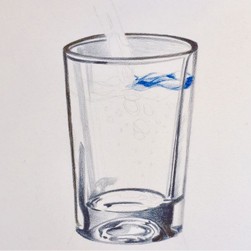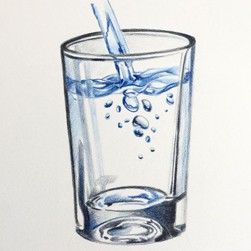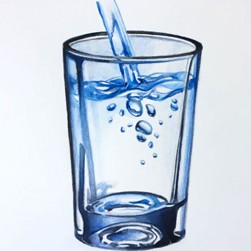
Place a half-filled glass of water before you on the table. A real object will make it easier for you to grasp proportions and shading (you can also use a photo). In order to describe the glass more successfully, first draw a rectangle on the watercolour paper with Warm Gray II 271 in delicate strokes. In the box, draw the outline of the water glass in warm grey V 274. Draw ellipses for the top opening of the glass and the bottom. Enhance certain parts with warm grey V 274, helioblue-reddish 151 and light ultramarine 140, but not too strongly so that no unwanted lines remain when blending later.

Precisely observe the glass placed in front of you and draw reflections, light and shadows with warm grey V col. 274 helioblue-reddish col. 151 and light ultramarine col. 140, in order to work out the plasticity of the glass and the water. Leave out very light / white spots.

Now blend the pigments with the water brush. The brush tip should not be too wet so that the outline of the water glass remains visible.